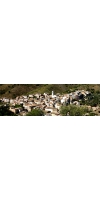Wine from Cellar Vall Llach

Focussing on quality over quantity, Celler Vall Llach has firmly embraced a small-is beautiful ethos of microproduction for its vineyards and "trossos".
Consistent with this philosophy, the celler has imposed a ceiling on production and growth in order never to lose the personal and thorough supervision exerted over each stage of the process of wine making.
All this, and the unique character of Priorat allow us to offer you wines that Vall Llach hopes you will find fascinating and exclusive
To the East of Priorat (Southern Catalunya), few kilometers from Coll Teixeta, we find Porrera, a historical Priorat municipality where Celler Vall Llach was created.
The township takes up 28,54 km² and spreads along the valley of the Cortiella River, which flows across the territory from East to West and finally runs into the Siurana River. The northern and western sectors are limited for La Serra del Molló. Practically the whole territory is covered with vineyards.
After the depopulation of La Garrantxa, Porrera is the only populated centre in the municipality.
You can arrive from Falset by T-740; from Reus by first taking N-420 (to Coll Teixeta) and later by TP-7041; from Cornudella de Montsant by taking C-242 (until Venta d'en Pubill) and then by TP-7402 to Porrera.
Porrera is a farming town but only a 40% of the land is cultivated. The rest are waste lands covered with brushwood and forests. The chief crops are vine, almond and hazelnut trees. There are some unused beads of lead and baryta and also some fountains of ferrous water.
The farming co-operative was founded in 1932.
Along the centuries Porrera earned itself the reputatio of 'the most rebellious city in Catalunya' but, History has also proved that the village has always fought for liberty.
Despite the continuous wars and fights that destroyed the village, Porrera has built and rebuilt its buildings and kept its noble and proud appearance. The sumptuous buildings, the wide streets and the rivers evoke its glorious past.
The most remarkable building in the Neoclassical parish church of Sant Joan Evangelista built between 1763 and 1711.
Visitors should not miss the hermitage of Sant Antoni Abad built in 1610 on top of a craggy hill, and also the route along the sundials spread all over the village.
No products found
- back
Selected Options
Wineries
Categories
Pricing
Countries
Regions
Grape Types
Wineries
Organic/Free Shipping
The Extra Virgin Olive Oil by Quinta de Boeira, produced in the Douro Valley, is bottled in a clay vase decorated with replicas of the 19th century's tiles.
The blend of the Picual and Cobrançosa olive trees produces a fine extra virgin olive oil that is aromatic and unique in quality. The ceramic vessel ensures that the virginity of the oilve oil is preserved, protecting it from temperature fluctuations and light.
The Prisoner Wine Co. Blindfold Chardonnay is made from 100 percent Chardonnay.
Blindfold Chardonnay is gorgeously balanced and a true triumph. Fragrant with notes of lime zest, yuzu, jasmine, and a slight minerality, Bright on the palate with juicy green citrus, lychee, green apple and toasted hazelnut. You’ll find both freshness and soft texture from its time in oak. The finish is long and indulgent–let yourself sink into this luxurious pour.
All of the fruit was hand-picked and whole cluster pressed. Barrel fermentation took place in 100% French oak barrels, and 23% New barrels that were selected by forest or grain tightness to frame our fruit profile, bring texture, and soften acidity. Lots were tasted every other week while we stirred the lees to precisely soften the mouthfeel and achieve optimal balance. With fermentation, and subsequent elevage taking place over 11 months we have achieved this goal.
Chardonnay grapes were harvested as flavors of lime zest and green apple started to develop and before acid started to ripen away. Picking decisions were made based on acidity rather than sugar level (Brix). We want to showcase the vineyard sites and growing region in perfect balance.




